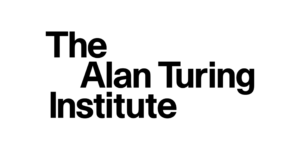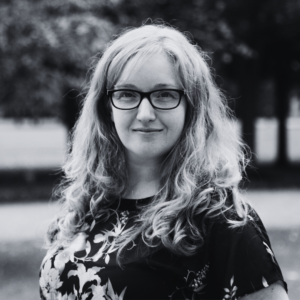Case study: The Alan Turing Institute
State of Open: The UK in 2021
Phase Two: “UK Adoption”

 Dr Kirstie Whitaker, Programme Lead for Tools, Practices & Systems
Dr Kirstie Whitaker, Programme Lead for Tools, Practices & Systems
Synopsis
Since its inception, the Alan Turing Institute has worked with open source software. Providing tools and guidance to bridge the gap between academia and different industries is crucial to the institute, and The Turing Way, an open source community-driven guide to reproducible, ethical, inclusive and collaborative data science, is at the heart of the community that facilitates this. One of their key open source projects is “Raphtory”, which helps to describe how networks evolve through time, specifically looking at dynamic graphs. Through open source, this project has become increasingly accessible and generalisable.
7.5 The Alan Turing Institute: Bridging the gap between industry and re-search
In conversation with Dr. Kirstie Whitaker, Programme Lead for Tools, Practices and Systems
The Alan Turing Institute, headquartered in the British Library, London, has worked with open source software since its inception six years ago. As the national institute for data science and artificial intelligence, it is funded through grants from Research Councils, Founder Members and University Partners. The Institute undertakes research to tackle some of the biggest challenges in science, society and the economy, and partners with a wide range of organisations.
‘Tools, Practices and Systems’
‘Tools, Practices and Systems’ (TPS) is an exciting research programme at the Institute, looking at the open infrastructure needed to share knowledge between silos. Dr. Kirstie Whitaker, explained that TPS uses open source software to successfully empower a global, decentralised network of people who connect data with domain experts.
Providing the right guidance and tools to help bridge the gap between academic research and different industries is crucial to The Alan Turing Institute. The Turing Way, an open source community-driven guide to reproducible, ethical, inclusive and collaborative data science, is a resource at the heart of the community that helps facilitate this.
Raphtory in Practice
“Raphtory” is a key open source project with its name based on a play on ‘graph’ and ‘story’. It describes how networks evolve through time, specifically looking at dynamic graphs. In reality, connections between entities are rarely static. Dynamic graphs enable information to be analysed in a way that’s more connected to the real world. Raphtory, incorporates information about the nodes and links at different points in time, and automatically updates as new data comes in.
The law firm Mishcon de Reya, in collaboration with legal data provider vLex Justis, used Raphtory to analyse over 400 years of documents, investigating the evolution of how foreign case law is used to make decisions by judges around the world. At first, they couldn’t install Raphtory, nor get the tool running for their analyses. As Raphtory is open source, they worked with the development team through their GitHub repository to fix the bugs. Data scientists within the law firm have contributed to the codebase and left the project more accessible and generalisable for future users. Kirstie explains the importance of their work: “Network analysis allow you to look at an ecosystem level. You don’t look at each piece of data individually…seeing the patterns that are across all of them is a much more realistic way of understanding complex patterns in the world.”
Going Forward
Not only adopting, but actively engaging with open source (using Raphtory and many other projects), more than pays for itself and helps the whole research community to fourish.
Kirstie hopes that, “By contributing to other projects, we will also draw in collaborators who, because they know us for being contributors to that project, will establish other collaborations with them, adding new features or using the infrastructure level code that we have in specifc data science applications”. This speeds up the research process because the focus is on creating solid foundations and a focus on, “the co-creation practices you need in order to share tools across different research groups.”
Engineers across TPS projects are “doing the work of making sure that outputs are open source, are reproducible, are robust, have documentation, and they’re tested”. Instead of recreating the wheel, Kirstie advocates for “recognising the importance of contributing into open source tools and reusing other people’s work.”
